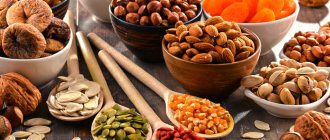Causes of milk stagnation
The main cause of lactostasis is an imbalance between the volumes of production and outflow of breast milk in a young mother. Factors that provoke the occurrence of congestion in the mammary gland are:
- improper attachment of the baby during feeding, leading to insufficient emptying of the thoracic lobes and ducts;
- insufficient sucking activity in the baby;
- the habit of holding the breast with the index finger and thumb during feeding;
- early weaning of the baby;
- irregular breastfeeding;
- the appearance of cracks in the nipples;
- injury to the mammary glands;
- wearing tight bras;
- hypothermia;
- habit of sleeping on your stomach;
- hyperlactation is a pathology that develops in a nursing mother and is characterized by excess milk production;
- lack of sleep, overwork;
- prolonged exposure to stress;
- heavy physical activity;
- history of mastopathy.
In addition, stagnation of milk in a nursing woman can occur due to peculiarities in the anatomical structure of the glands: narrow ducts, flat nipples, sagging lower parts of the breasts.
How to apply a baby to the breast?
The baby works more actively with the lower jaw during sucking, therefore, in order to dissolve the area where milk has accumulated, the baby’s chin should point to it.
- If stagnation of milk occurs in the armpit area, which most often happens, then the newborn should be placed so that he sucks from an under-arm position.
- The baby resolves congestion in the middle part by lying on its side, but the problematic breast is given on top!
- If the lower part has suffered from stagnation, then feeding is done with the child sitting on the mother’s lap, facing the mother.
- Congestion in the upper part is resolved from an unusual position for feeding. The baby is placed with his legs facing away from him on the bed, and the mother leans towards him so that the baby is upside down compared to the usual position.
Read also:
Tips for a young mother: how to stop breastfeeding quickly and safely
It is worth feeding the child during congestion every 1-2 hours in order to quickly cope with the problem. At night, it is also important that the baby suckles at the breast without causing new congestion. If there is a lot of milk, then after feeding the baby you need to carefully express the remaining milk. In order to facilitate the process of expressing milk, if there is lactostasis, it is necessary to slightly prepare the mammary gland for expressing. If there is no temperature, then a warm compress is applied to the mammary gland, for example, a hot diaper (for 7-10 minutes). You can take a hot shower. Then lubricate it with baby cream and move the milk from top to bottom, from under the armpits, to the nipples. Then this process will be less painful.
After pumping, you can apply a cool compress, such as a heating pad with ice, for five minutes. This will help relieve swelling from the chest. After pumping, you can give your baby the breast so that he can completely deal with congestion. He will do it just perfectly!
Traditional methods of treating lactostasis
So, there is stagnation of breast milk in a nursing mother: what to do, what measures can be taken? According to doctors, one of the most effective methods of pumping is self-massage of the breast with your hands . The use of this technique allows you to expand the milk ducts, eliminate compactions that have formed in them, and relieve pain.
Breast massage during stagnation of milk in a nursing mother is performed as follows:
- warm up the mammary glands a little under a warm shower;
- make several circular massaging movements from the base of the breast to its nipple;
- find the lump and massage it until the corresponding lobe of the gland is completely decanted.
What to do if a young mother has stagnant milk, besides massage? Doctors give women who decide to be treated at home the following recommendations:
- refuse to artificially feed your baby using a pacifier;
- regularly express stagnant milk manually or using a special suction;
- When feeding, place the baby more often on the sore gland;
- wear special underwear for nursing mothers;
- warm up and massage your breasts before each feeding or pumping;
- sign up for a course of physiotherapeutic ultrasound treatment;
- keep drinking regime;
- get more rest;
- try to sleep lying on your side.
With lactostasis, it is strictly forbidden to roughly massage the breasts or apply warming or alcohol-containing compresses to them.
tablets for lactostasis
Dear Ladies, you had to fight lactostasis. How were you able to overcome this problem? As for me, I encountered lactostasis both times, and after taking the measures below, I coped with it in half a day.
Rivers of milk to you and feedings without lactostasis! 
Many people know firsthand what breast lactostasis is like in a nursing mother. This unpleasant disease is caused by stagnation of milk. For a number of reasons, one or more milk ducts become clogged. In this case, the milk cannot find a way out, accumulates in the milky lobules, and stretches them. That is why the tissues surrounding the overcrowded lobule swell, inflammation occurs, and pain appears. What are the reasons for milk stagnation and how to get rid of it?
Causes of lactostasis Most often, lactostasis occurs during the first two weeks of breastfeeding. During this period, lactation has not yet been adjusted; milk does not arrive “at the baby’s request.” There are many reasons for the occurrence of lactostasis, but among them it is customary to distinguish three:
Incorrect application. Often, inexperienced mothers do not pay attention to how the baby eats. As he himself took the breast, he sucked. It is not right. Make sure you have the correct grip and, if necessary, consult with more experienced mothers. This reason is often accompanied by long breaks between feedings, most often at night.
Chest compression. This can be caused by tight and not very comfortable underwear or an uncomfortable position during sleep. If you are a big fan of sleeping on your stomach, give up this habit for a while while you are feeding your baby.
Stress and physical activity. Constant stress has a negative effect on the body. Get out of this state as quickly as possible. Physical activity is good for the body, but in reasonable doses. Do not overdo it. The reasons listed above are the most common, but this does not mean that there are others. Breast lactostasis can occur due to the following factors: - flat nipple, which makes proper latch difficult; - too much milk production, which the baby cannot cope with; - excessive pumping after each feeding; - narrow milk ducts, which prevents the normal release of milk; - milk that is too thick or fatty; - sluggish sucking of the baby due to prematurity or illness; - cracked nipples. Lactostasis does not always occur due to problems associated with breastfeeding. It can begin to develop due to various injuries, bruises of the chest, or due to hypothermia, which causes a narrowing of the milk ducts. It’s not for nothing that our grandmothers had such a concept as “getting a chest cold.”
Symptoms The first symptoms of lactostasis are that a nursing woman feels discomfort and pain in the mammary gland. The breast becomes dense and swollen. Moreover, a compaction will appear where milk stagnation occurred. Also among the first signs is redness of the breast. At this stage there are still no noticeable changes in well-being. Therefore, at the first symptoms, you need to start pumping and massage the mammary glands. If the disease cannot be controlled at the initial stage, the breast quickly swells and turns red. The gland becomes hot and painful. The nursing mother begins to feel weak, her body temperature rises, chills and nausea appear. Expressing milk manually becomes a painful procedure. At this stage, the baby refuses breastfeeding. It is no longer convenient for him to grab a hard breast.
Treatment
The first aid will be your baby. If you suspect lactostasis, immediately apply it to your chest. The baby will free the ducts from stagnation better than any device. Give your baby the breast as often as possible until lactostasis passes; If your baby refuses to breastfeed, you need to start expressing by hand. It is advisable to take a warm shower or make a warm compress before this, then the process will go easier. The best option is to alternate pumping actions with light stroking movements. It is impossible to squeeze or massage the breasts strongly, this further injures the gland and increases the area of edema; If chills occur, you can take any paracetamol-based antipyretic; After emptying your breasts, you can use Traumele C cream, which is applied to the area of congestion, or Arnica ointment; If lactostasis in a nursing mother occurs due to stress, you can take the drug “no-spa” one tablet up to 3 times a day. There will be no harm to the baby, but spasms of the milk ducts will pass. Avoid any alcohol compresses; ichthyol and Vishnevsky ointments are also prohibited. No warming effect is needed unless you want to treat mastitis later. If after 2-3 days the disease has not subsided, antibiotic treatment should be started. Augmentin or amoxicillin are most often prescribed. In any case, the treatment regimen should be selected only by a specialist. Massage Once you have ensured the flow of milk from your overfilled lobes, it’s time to massage your breasts. It is important to follow certain recommendations. Basic rules for breast massage for lactostasis: The main goal is to relax the existing seals, so we massage the breasts without forceful pressure. When massaging, the hand should move from the base of the breast to the nipple. This will help the milk come out. The movements should be spiral-shaped and should be performed clockwise. If the massage causes pain, you can do it in the shower. The water should be warm, not hot.
How to express with lactostasis

Folk remedies If you are unable to get rid of the disease through pumping and massage, you can start using the advice of traditional medicine. All this together will leave no chance for lactostasis. Cabbage leaves have long been considered a good remedy for this disease. The leaves need to be washed well and cuts made in them to release the juice. A cabbage leaf is fixed on the sore chest for approximately three hours. This method reduces chest pain and helps reduce fever. It is recommended to change cabbage leaf compresses every 2 hours. You can also use chamomile decoction. To do this you need to pour 2 tbsp. spoons of collection with boiling water. Let it sit for an hour and start making lotions. You can repeat up to three times a day. The infusion can only be used warm. Hot lotions will only accelerate the formation of pus and the development of mastitis. Another way to “drive away” lactostasis is onion cakes with honey. Take 1 tbsp. spoon of chopped onion, mix with honey in the same amount and form cakes. Apply to the sore breast no more than three times a day. To treat the mammary gland before feeding, you can use a decoction of eucalyptus. It’s easy to prepare: pour eucalyptus leaves with cold water and boil for 15 minutes over low heat. Prevention The main measure to prevent lactostasis is frequent feedings. If you feel that your breasts are full and your baby refuses to eat, it is better to express a little milk. Just not completely, but until the breasts are soft. Feed your baby in different positions. Then different lobes of the breast will be emptied and you will not give the disease any extra chances to develop. Also, to prevent this disease, it is recommended to wash your breasts daily with warm water and express lightly before feeding. In this case, the baby will be able to suck out later milk, which is thicker and more nutritious. This advice is valid if the chest periodically becomes full. Expressing milk unless absolutely necessary is not recommended. Take care of your breasts. Follow the rules of hygiene, do not wear tight underwear or clothing. Also try to avoid hypothermia of the mammary glands.
Source
Traditional methods of dealing with the problem
It is useful to combine traditional treatment of lactostasis with the use of proven methods of traditional medicine. Medicines, recipes for which have been passed down from generation to generation, help reduce pain, prevent the development of the inflammatory process, and significantly speed up recovery.
- One of the most accessible folk remedies for lactostasis is white cabbage. How to get rid of milk stagnation using this vegetable? It’s very simple: just separate a cabbage leaf from a head of cabbage, beat it a little with a meat mallet and apply it to your chest. Keep the compress until the cabbage dries. After this, replace the used sheet with a fresh one. Regularly performing this procedure will help remove stagnation, get rid of local hyperthermia, and prevent the development of the inflammatory process.
- In order to improve the flow of milk and relieve pain, you can prepare a compress of baked onions. Cool the finished onion, cut it in half and apply the cut side to the affected area for 2-3 hours.
- For lactostasis, it is useful to take a weak aqueous infusion of sage orally. In order to prepare the medicine, you need to pour 2 teaspoons of plant material into a half-liter jar filled with boiling water, wait 40 minutes and filter the liquid well. Take a quarter glass of the drink shortly before meals.
- Many people are interested in how to strain milk stagnation using chamomile. This is not difficult to do: to prepare the medicine, just leave 2 tablespoons of inflorescences in a glass of boiling water for 45-55 minutes. Soak a piece of cotton fabric with the cooled and filtered infusion and apply it to the breast after pumping for 25 minutes. Carry out the procedure once every 4 hours.
- An effective remedy for lactostasis is a mucous infusion of flax seeds . To prepare it, you need to heat a glass of water to 60 degrees, pour a small handful of plant material into it and leave for 4 hours. When the infusion is ready, you should soak two pieces of cotton cloth in it and apply them to the mammary glands for half an hour.
- An anti-inflammatory and analgesic compress can be prepared from hop cones and walnut leaves. Pour 6 tablespoons of each ingredient into any convenient container, pour 700 ml of water and let the mixture brew for 6-8 hours. Soak a clean handkerchief with the liquid, apply it to the swollen chest, cover it with cellophane and wrap it in a scarf. Leave the compress overnight.
- You can speed up the recovery process for lactostasis with the help of natural honey. How to strain milk stagnation using this beekeeping product? It’s very simple: just heat it to 40 degrees in a water bath, combine it with flour 1:1 and mix. Apply the resulting ointment to the affected chest, cover with polyethylene and wrap in a woolen scarf. Keep the compress for 6 hours. In order to increase the effectiveness of the product, you can add a little onion minced into it.
- In order to relieve chest pain due to lactostasis, you can use honey and egg dough. In any convenient container you need to combine chicken yolk, 1 tablespoon each of honey and any vegetable oil, and a handful of flour. Mix the mixture thoroughly, make small cakes out of it and apply them to the sore areas of the chest. Cover the compress with a film or thick cloth and leave overnight. It is useful to repeat the procedure daily.
- You can make a compress from honey and beets, which significantly speeds up recovery from lactostasis. A medium-sized root vegetable should be boiled until tender, cooled, grated and combined with honey 2:1. Transfer the resulting mass to the compacted area of the chest, cover with a piece of polyethylene and bandage with woolen cloth. Keep the compress for 3-4 hours.
- An effective remedy to prevent the development of lactostasis is a decoction of eucalyptus. The leaves of this plant (20 pieces) must be boiled for 15 minutes in water (2 cups) and left for at least a day. The nipple area should be treated with the prepared decoction before each baby's application.
Before using alternative medicine to eliminate milk stagnation in the breast, you should consult a doctor in detail. This will help avoid the development of allergic reactions and other complications that arise from the incorrect use of herbal medicines.
Causes of lactostasis
Most often, milk stagnation occurs in the following cases:
- When a woman constantly sleeps in one position or prefers to feed with one breast. This leads to pinching or overflowing of the ducts, especially often in the armpit.
- For the same reason, a breastfeeding mother begins to have problems wearing tight and constricting underwear.
- If there are poor relationships in the family, and the mother is constantly under stress or is forced to do overwhelming housework. Psycho-emotional and physical overloads lead to spasms and blockage of the glandular ducts .
- Changes in the quality of milk when it becomes thicker under the influence of food consumed. Sometimes this happens when the amount of fluid you drink decreases or in hot weather due to increased sweating.
- Feeding after the first birth. In a young woman, the outflow is hampered as a result of the imperfection of the ducts: they are narrowed and have a tortuous structure.
- A blow to the chest area, compression or other physical impact.
- Increased pumping. Many women are very afraid that insufficient milk will be produced and constantly express themselves. This procedure actually leads to increased lactation; the baby cannot suck it completely at the next feeding, and it remains.
- Unreasonably long gap between feedings. Old milk remains in the ducts, and at the same time new milk begins to be secreted.
- Chronic fatigue and lack of sleep, which are often observed in mothers in the first months after the birth of the baby, also contribute to the appearance of lactostasis.
If you do not pay attention to the symptoms of stagnation and do not take any measures to eliminate it, then mastitis may develop. This disease often requires immediate surgical intervention and significantly reduces the quality of life.










